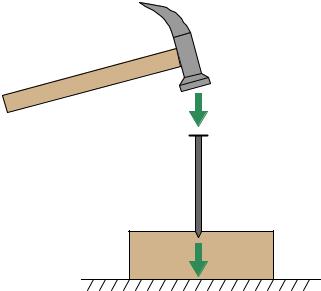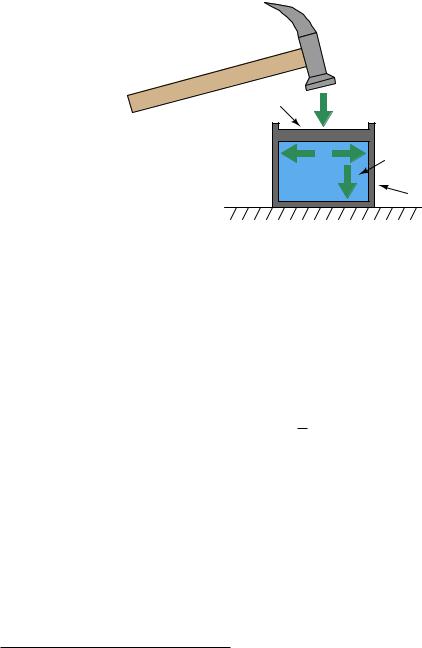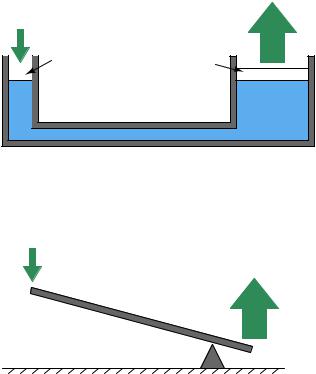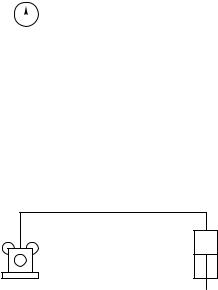
- •Preface
- •Calculus
- •Introduction to calculus
- •The concept of differentiation
- •The concept of integration
- •How derivatives and integrals relate to one another
- •Symbolic versus numerical calculus
- •Numerical differentiation
- •Numerical integration
- •Physics
- •Metric prefixes
- •Areas and volumes
- •Common geometric shapes
- •Unit conversions and physical constants
- •Unity fractions
- •Conversion formulae for temperature
- •Conversion factors for distance
- •Conversion factors for volume
- •Conversion factors for velocity
- •Conversion factors for mass
- •Conversion factors for force
- •Conversion factors for area
- •Conversion factors for pressure (either all gauge or all absolute)
- •Conversion factors for pressure (absolute pressure units only)
- •Conversion factors for energy or work
- •Conversion factors for power
- •Terrestrial constants
- •Properties of water
- •Miscellaneous physical constants
- •Weight densities of common materials
- •Dimensional analysis
- •The International System of Units
- •Conservation Laws
- •Classical mechanics
- •Work, energy, and power
- •Mechanical springs
- •Rotational motion
- •Simple machines
- •Levers
- •Pulleys
- •Inclined planes
- •Gears
- •Belt drives
- •Chain drives
- •Elementary thermodynamics
- •Heat versus Temperature
- •Temperature
- •Heat
- •Heat transfer
- •Phase changes
- •Phase diagrams and critical points
- •Saturated steam table
- •Thermodynamic degrees of freedom
- •Applications of phase changes
- •Fluid mechanics
- •Pressure

170 |
CHAPTER 2. PHYSICS |
2.11Fluid mechanics
A fluid is any substance having the ability to flow : to freely change shape and move under the influence of a motivating force. Fluid motion may be analyzed on a microscopic level, treating each fluid molecule as an individual projectile body. This approach is extraordinarily tedious on a practical level, but still useful as a model of fluid behavior.
Some fluid properties are accurately predicted by this model, especially predictions dealing with potential and kinetic energies. However, the ability of a fluid’s molecules to independently move give it unique properties that solids do not possess. One of these properties is the ability to e ortlessly transfer pressure, defined as force applied over area.
2.11.1Pressure
The common phases of matter are solid, liquid, and gas. Liquids and gases are fundamentally distinct from solids in their intrinsic inability to maintain a fixed shape. In other words, liquids and gases tend to fill whatever solid containers they are held in. Similarly, both liquids and gases both have the ability to flow, which is why they are collectively called fluids.
Due to their lack of definite shape, fluids tend to disperse any force applied to them. This stands in marked contrast to solids, which tend to transfer force only in the applied direction. Take for example the force transferred by a nail, from a hammer to a piece of wood:
Hammer
Force exerted on nail
Nail
Wood
Force exerted on wood
Stationary surface
The impact of the hammer’s blow is directed straight through the solid nail into the wood below
– nothing surprising here.

2.11. FLUID MECHANICS |
171 |
Now consider what a fluid would do when subjected to the same hammer blow:
Hammer
Piston |
Force |
exerted |
|
|
on piston |
Force |
Fluid |
|
|
exerted |
|
on cylinder |
Cylinder |
walls |
|
Stationary surface |
|
Given the freedom of a fluid’s molecules to move about, the impact of the hammer blow becomes directed everywhere against the inside surface of the container (the cylinder). This is true for all fluids: liquids and gases alike. The only di erence between the behavior of a liquid versus a gas in the same scenario is that the gas will compress (i.e. the piston will move down as the hammer struck it), whereas the liquid will not compress (i.e. the piston will remain in its resting position). Gases yield under pressure, liquids do not.
It is very useful to quantify force applied to a fluid in terms of force per unit area, since the force applied to a fluid becomes evenly dispersed in all directions to the surface containing it. This is the definition of pressure60 (P ): the amount of force (F ) distributed across a given area (A).
P = FA
In the metric system, the standard unit of pressure is the pascal (Pa), defined as one Newton (N) of force per square meter (m2) of area. In the British system of measurement, the standard unit of pressure is the PSI : pounds (lb) of force per square inch (in2) of area. Pressure is often expressed in units of kilopascals (kPa) when metric units are used because one pascal is a rather small61 pressure for most engineering applications.
60The concept of pressure is also applicable to solid materials: applying either a compressive or tensile force to a solid object of given cross-sectional area generates a pressure within that object, also referred to as stress.
61To give some perspective on this, 1 pascal of pressure is equal to (only) 0.000145 pounds per square inch!

172 |
CHAPTER 2. PHYSICS |
The even distribution of force throughout a fluid has some very practical applications. One application of this principle is the hydraulic lift, which functions somewhat like a fluid lever:
Resulting
force
Applied |
Hydraulic lift |
|
|||||
|
force |
|
|||||
|
|
|
|
|
Small |
Large |
|
|
|
|
|
|
piston |
|
|
|
|
|
|
|
piston |
|
|
|
|
|
|
|
|
|
|
|
|
|
|
|
|
|
|
Fluid
Applied
force
Lever and fulcrum |
Resulting |
force |
|
Lever |
|
Fulcrum
Ground
Force applied to the small piston creates a pressure throughout the fluid. That pressure exerts a greater force on the large piston than what is exerted on the small piston, by a factor equal to the ratio of piston areas. Since area for a circular piston is proportional to the square of the radius (A = πr2), even modest ratios of piston diameter yield large ratios of area and therefore of force. If the large piston has five times the area of the small piston (i.e. the large piston’s diameter is 2.236 times greater than the small piston’s diameter), force will be multiplied five-fold. Just as with the lever, however, there must be a trade-o so as to not violate the Conservation of Energy. The trade-o for increased force is decreased distance, whether in the lever system or in the hydraulic lift system. If the large piston generates a force five times greater than what is applied to the small piston, it must move only one-fifth as far as the small piston’s motion. In this way, energy in equals energy out (remember that work, which is equivalent to energy, is calculated by multiplying force by parallel distance traveled).

2.11. FLUID MECHANICS |
173 |
For those familiar with electricity, what you see here in either the lever system or the hydraulic lift is analogous to a transformer : we can step AC voltage up, but only by reducing AC current. Being a passive device, a transformer cannot boost power. Therefore, power out can never be greater than power in, and given a perfectly e cient transformer, power out will always be precisely equal to power in:
Power = (Voltage in)(Current in) = (Voltage out)(Current out)
Work = (Force in)(Distance in) = (Force out)(Distance out)
Fluid may be used to transfer power just as electricity is used to transfer power. Such systems are called hydraulic if the fluid is a liquid (usually oil), and pneumatic if the fluid is a gas (usually air). In either case, a machine (pump or compressor) is used to generate a continuous fluid pressure, pipes are used to transfer the pressurized fluid to the point of use, and then the fluid is allowed to exert a force against a piston or a set of pistons to do mechanical work:
Hydraulic power system
|
|
|
Pipe |
|
|
|
Pump |
|
Reservoir |
|
|
Cylinder |
|
|
|
|
||||
|
||||||
|
|
|
|
|
|
|
|
|
|
|
|
|
|
|
|
|
|
|
|
|
|
|
|
|
Piston |
||
|
|
|
|
|
||
Pneumatic power system
Pipe
Cylinder
Compressor
Piston
To learn more about fluid power systems, refer to section 10.2 beginning on page 694.
